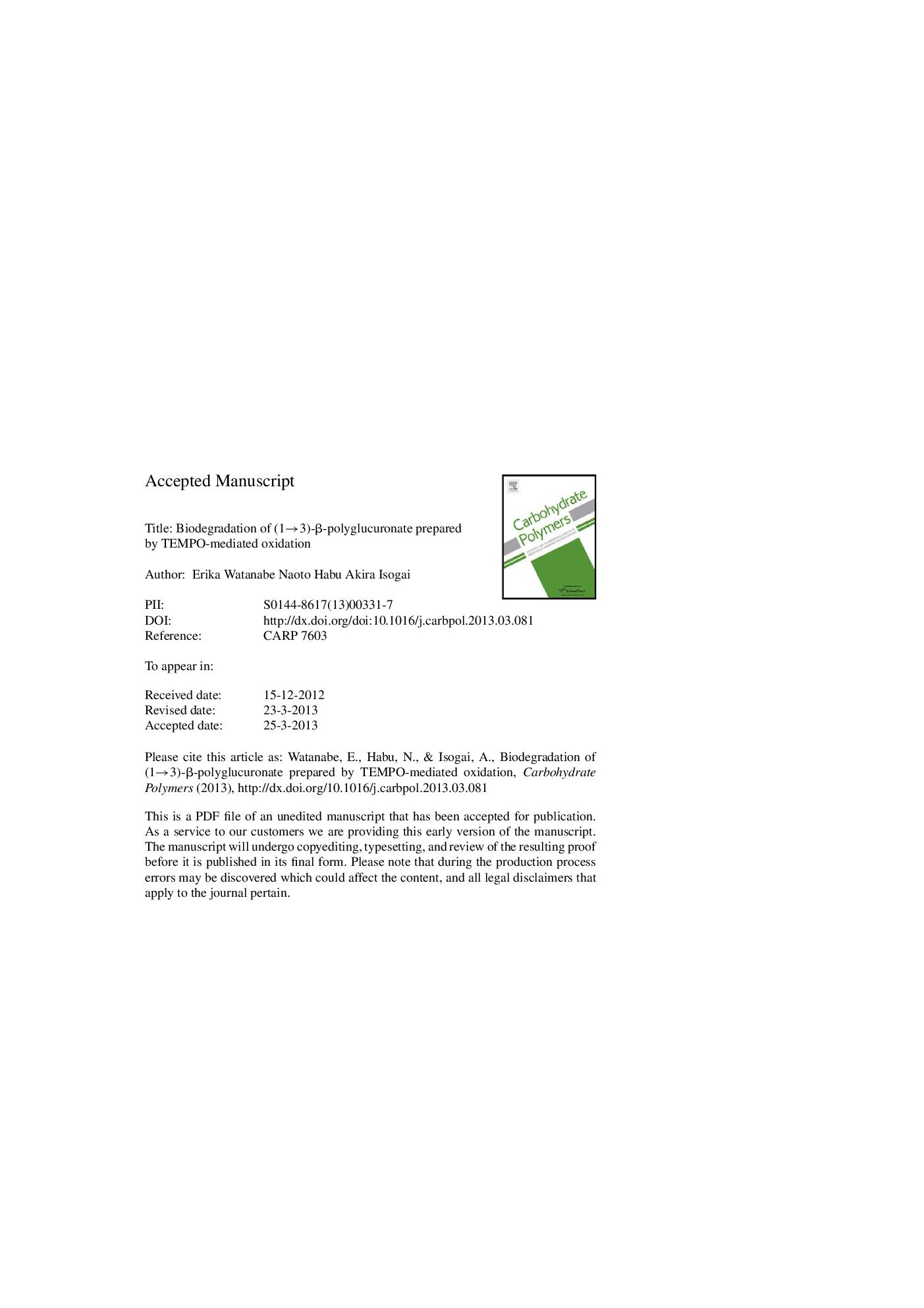| Article ID | Journal | Published Year | Pages | File Type |
|---|---|---|---|---|
| 10603480 | Carbohydrate Polymers | 2013 | 22 Pages |
Abstract
2,2,6,6-Tetramethylpiperidine-1-oxyl radical (TEMPO)-mediated oxidation was applied to curdlan to prepare water-soluble sodium (1â3)-β-polyglucuronate, and its biodegradation behavior was then investigated. A bacterial strain (EH621) having the ability to degrade (1â3)-β-polyglucuronate was isolated from soil, and identified as Paenibacillus sp. Strain EH621 cultured with (1â3)-β-polyglucuronate decreased the initial total carbon in the supernatant by approximately 60% within 3 days, showing that (1â3)-β-polyglucuronate can be readily degraded and metabolized by microorganisms present in the natural environment. Hydrolytic enzyme activity was detected in the cell-free extract of EH621, which was highly specific to (1â3)-β-polyglucuronate. Analyses of the enzymatic degradation products revealed that (1â3)-β-polyglucuronate was endolytically degraded to its monomeric unit, glucuronate, via some oligomers and dimers.
Related Topics
Physical Sciences and Engineering
Chemistry
Organic Chemistry
Authors
Erika Watanabe, Naoto Habu, Akira Isogai,
